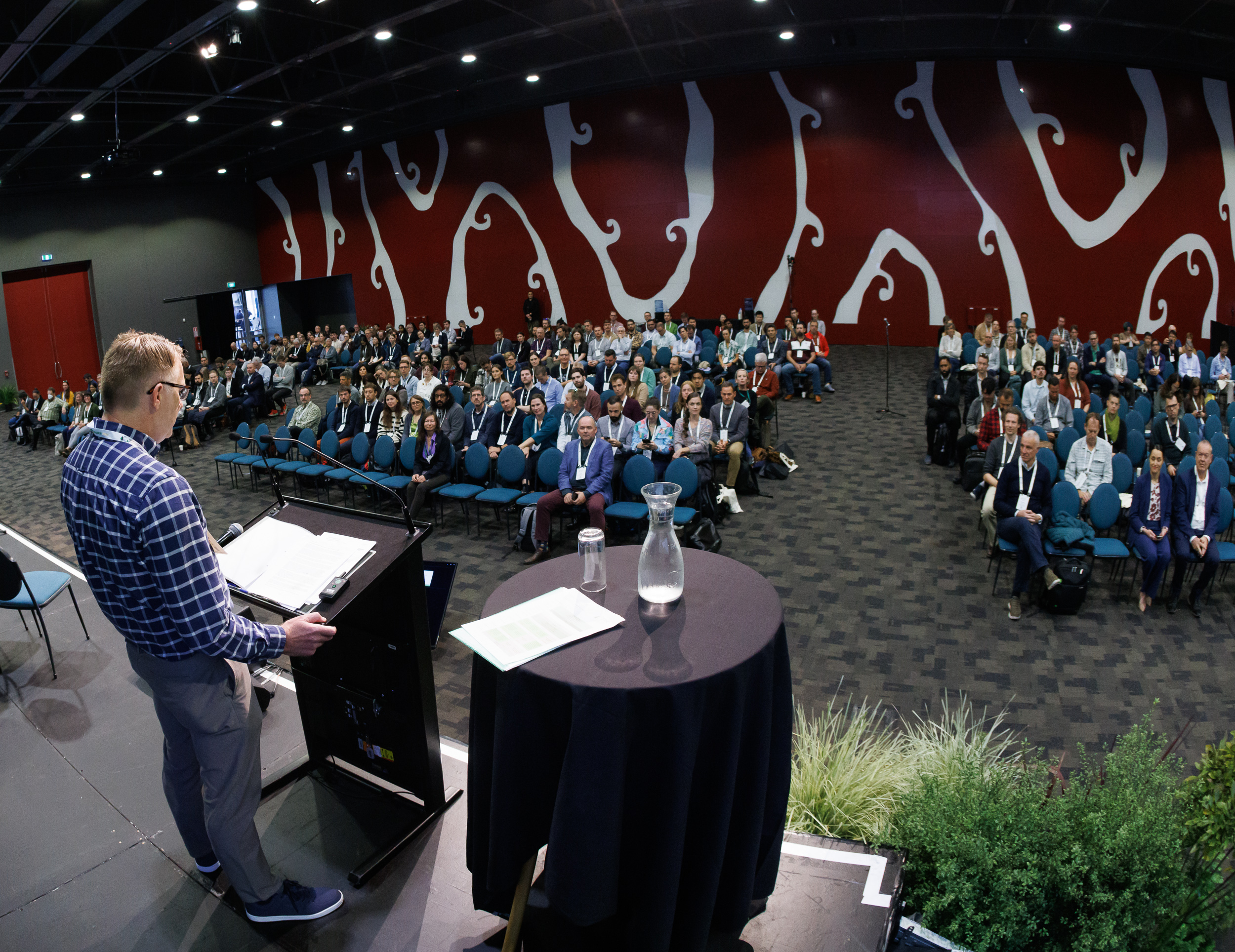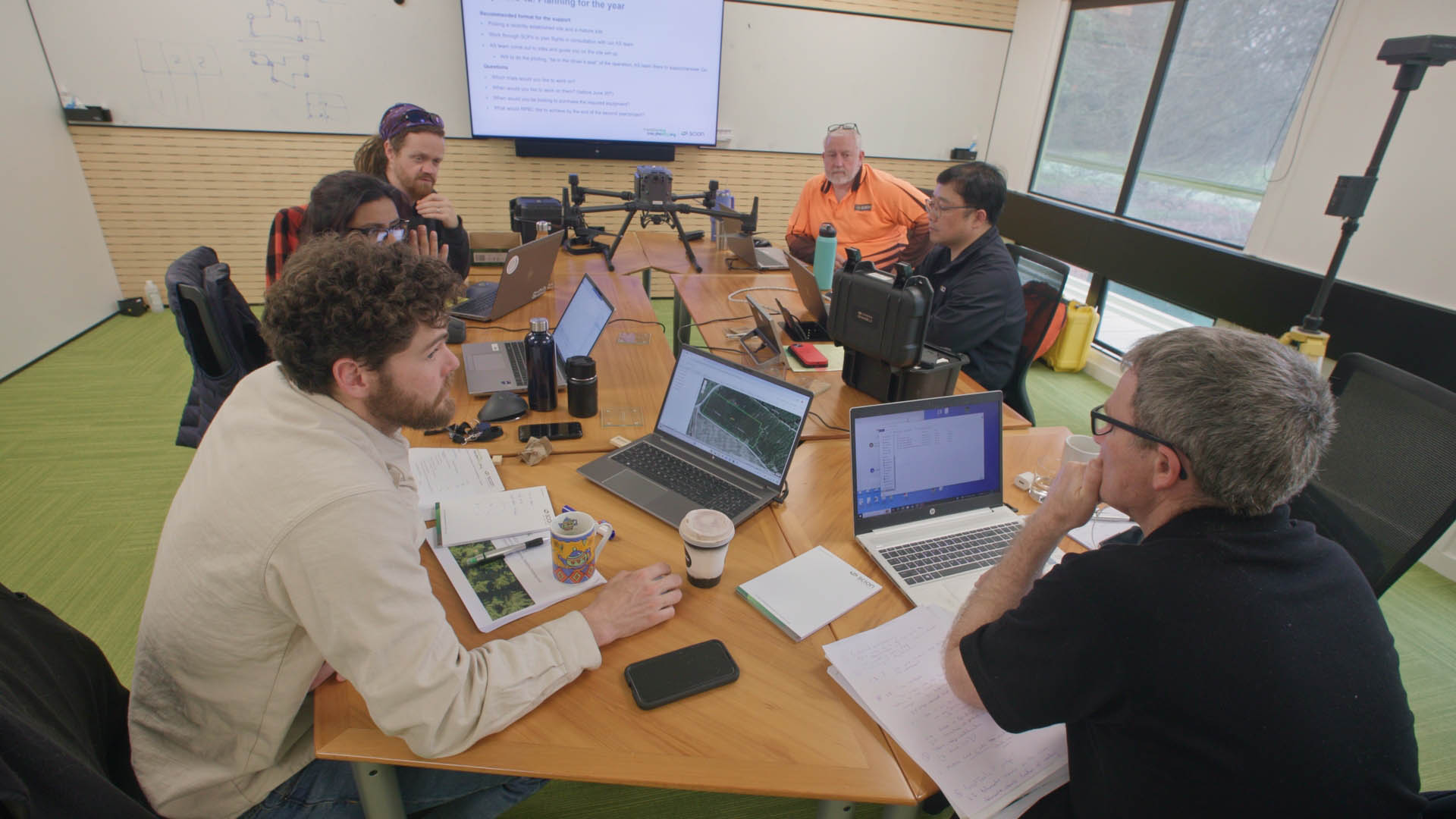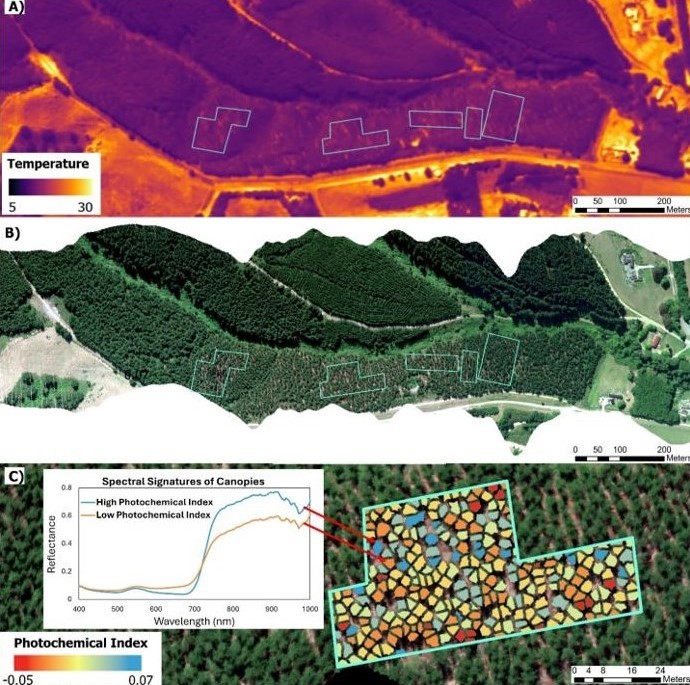Benefits and highlights
Hosting ForestSAT 2024
Scion's successful bid through the TTP programme secured the hosting of ForestSAT 2024 in Australasia, the most prestigious global remote sensing conference. This provides an invaluable platform for showcasing TTP programme findings, fostering partnerships with international researchers, and enhancing global visibility for Rotorua.
At the conference, scientists from Scion and the TTP programme presented their findings:
- Lania Holt - An engagement framework for phenotyping native trees in Aotearoa New Zealand, for Māori cultural purposes
- Mark Jayson Felix - Detecting the Short-Term Effects of Water Stress on Radiata Pine Physiology Using Thermal Imagery
- Dr Michael Watt - Pre-visual and early detection of myrtle rust on rose apple using hyperspectral and thermal indices
- Dr Michael Watt & Andrew Holdaway - Early prediction of regional red needle cast outbreaks using climatic data trends and satellite-derived observations
- Dr Mitch Bryson - Virtual forests and unsupervised domain adaptation for training deep learning-based models for tree analysis from LiDAR point clouds
- Robin Hartley - Objective branch characterisation of forestry trials using PLS - the tool we’ve been waiting for?
- Dr Russel Main - Early Detection of Myrtle Rust on Pōhutukawa Using Indices Derived from Hyperspectral and Thermal Imagery
- Dr Sadeepa Jayathunga - Unlocking the potential of consumer-grade UAV laser scanners for accurate assessment of plantation forests.

Early detection of myrtle rust on pōhutukawa
Myrtle rust has been detected on pōhutukawa before symptoms are visible in a controlled laboratory environment for the first time. Individual pōhutukawa plants were inoculated and monitored with thermal and hyperspectral cameras, the results of this research were published in March 2024. Our methodology shows considerable potential for pre-visual or early detection of myrtle rust in nursery settings or for biosecurity purposes in areas where there are important amenity trees.
Collection of quantitative trait data
We collected extensive, fine resolution remotely-sensed data throughout 2023 and 2024; the combined dataset is an unprecedented collection of data from important trials within New Zealand and will provide considerable insight into genetic variation in key traits.
- UAVs equipped with thermal and hyperspectral sensors were used at several exotic and indigenous forest sites,
- A notable advancement was calculating solar-induced fluorescence from hyperspectral data, which is strongly linked to photosynthetic activity and tree health.
- We collaborated with SPS Automation, an automated systems R&D company, and SKYCAN, an aerial services company, to attach hyperspectral and thermal sensors to a fixed-wing aircraft.
- Three-dimensional structural trait data have also been collected at 13 additional sites, using LiDAR technology.

Radiata Pine Breeding Company (RPBC) digital trials
RPBC has contracted Scion over two years to customise TTP pipelines for their trial digitisation needs. Scion has developed tools for forest and individual tree assessment, including automated pipelines for end-to-end data processing that enable tasks such as mapping individual trees and detailed characterisation of tree structure.
Preliminary findings show precise trial digitisation is possible and there are strong correlations between UAV-derived and field-measured tree traits. Scion conducted two workshops with RPBC, providing updates on different sensor comparisons, demonstration of new techniques, and access to an alpha version of the customised pipeline. RPBC plans to expand UAV-based assessments and integrate these techniques into their trial assessment process in the near future, highlighting the impact of the programme’s cutting-edge research on the forest industry in New Zealand.
UAV remote sensing holds significant potential in operational tree breeding. The trial digitisation pipeline being developed by Scion is pivotal in linking raw point-cloud data to tree metrics and estimating breeding values for key traits like growth, form, and disease susceptibility. I'm pleased with the focused progress of the project and its clear alignment with RPBC's objectives and broader tree breeding goals - Will Stout, Field Trials Manager, RPBC
Pre-visual detection of regional red needle cast outbreaks
Red needle cast is a very damaging disease of the widely grown species, radiata pine, within New Zealand. Using a combination of satellite imagery and weather data, a novel methodology, was developed to pre-visually predict the incidence of red needle cast on radiata pine within the Gisborne region of New Zealand over a five-year period, from 2019 – 2023. The model allowed prediction of the disease 7-8 months before first symptoms developed. These results were published in April 2024.
Hyperspectral imagery for disease phenotyping
Significant progress has been made in using hyperspectral imagery to accurately phenotype Dothistroma needle blight, a major disease affecting radiata pine. This streamlined approach can be a robust alternative to time-consuming and subjective visual scoring methods, providing economic benefits to the forest industry.
EnMAP hyperspectral satellite
The TTP programme has successfully applied hyperspectral satellite data to large forests in New Zealand, converting imagery into maps displaying key pigments and structural attributes. This data is utilised to detect stresses such as nutrient deficiencies, diseases, and water-related issues, providing valuable insights for forest management.
Innovative seedling detection method
An innovative method for detecting young conifer seedlings using high-resolution UAV imagery has been developed. This cost-effective and rapid approach not only reduces reforestation survey costs but also holds promise for seedling health detection, survival analysis, weed infestation assessment, and ongoing monitoring of seedling growth.

